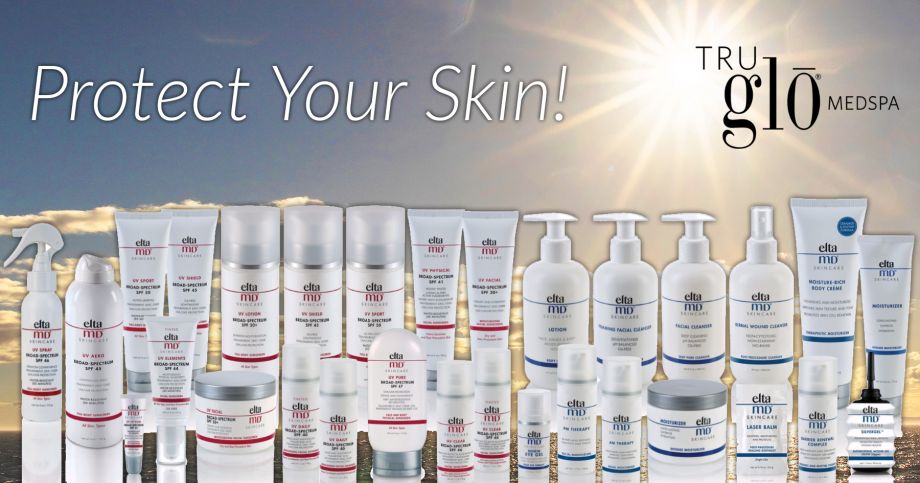
Now that summer has arrived with its warm temperatures and long sunny days, it’s time to focus more attention on skin care products that can protect you from the sun’s damaging rays. In particular, you should be using skin care products that provide protection from the widest spectrum of ultraviolet (UV) light from the sun possible, because those rays are the biggest contributor to the physical signs of aging skin, other than aging itself.
How Does Ultraviolet Light Damage Skin?
In addition to providing warmth and light, the sun emits a spectrum of UV radiation that penetrates and damages your skin. “Long wave” UVA rays penetrate the deepest and can reach into the “dermis,” the thickest layer of your skin. Exposure to UVA rays over time causes wrinkling and premature skin aging, as well as suppression of the immune system and can play a role in the formation of skin cancer cells. Short wave UVB rays only penetrate the skin’s surface area, but it is these rays that are the primary cause of sunburn. Sunburned skin represents damaged skin, and when repeated over time, enhances the overall physical signs of aging skin. UVB rays also play a role in the development of cancer and melanoma. The bottom line is that people need to protect themselves from both forms of UV.
Making Sense of Sunscreen Products
Sunscreen products were initially developed to protect against the easily recognized rapid sunburn damage caused by UVB rays. In fact, the familiar “sun protection factor” (SPF) label found on all sunscreen products is primarily referring to how well the product prevents skin exposure to UVB. The SPF doesn’t specifically cover UVA, although we are exposed to about 20 times more UVA than UVB, unless the label also claims “broad-spectrum.” Thus, to make sure you are receiving the fullest protection possible from both types of UV, make sure that your skin care product’s SPF is “broad-spectrum.” The active ingredients in sunscreen products work as UV filters by absorbing, scattering or reflecting the sun’s rays, and are categorized as either chemical (organic) or physical (inorganic). Most sunscreens today contain between two and seven of these UV filters, some targeting rays in the UVA spectrum, others targeting those in the UVB spectrum, and a couple which do both. Other ingredients are also added, such as skin moisturizers, water proofers and preservatives, and sunscreens can be found in a wide variety of formations, whether as creams, lotions, gels, sprays, powders, or sticks/bars.
Sunscreen Products and Acne
Some people feel that they should avoid sunscreens because their formations can lead to acne or the development of whiteheads and blackheads. These effects are generally attributed to products that may clog the pores, as well as on how some chemical filters in sunscreen can increase heat on the skin. To avoid these concerns, look for labels that say “non-comedogenic” and/or “non-acnegenic,” both of which contain formulations less likely to clog pores. Those susceptible to heat-induced skin breakouts should consider formulations that rely on physical rather than chemical UV filters, as the physical ones—such as zinc oxide and titanium oxide—transfer less heat to the skin.
Tru Glō Medspa carries a variety of sun protection products within its wide range of skin care products, including the full line of EltaMD broad-spectrum sun care lotions, creams, gels and sprays. Tru Glō Medspa can help you pick the perfect EltaMD sun care product for your skin type, and help protect your skin from the ravages of UV rays. To learn more about EltaMD, and all of our take-home skin care products, contact us today for a free consultation, through either our website’s contact page or by calling 239-919-7009.